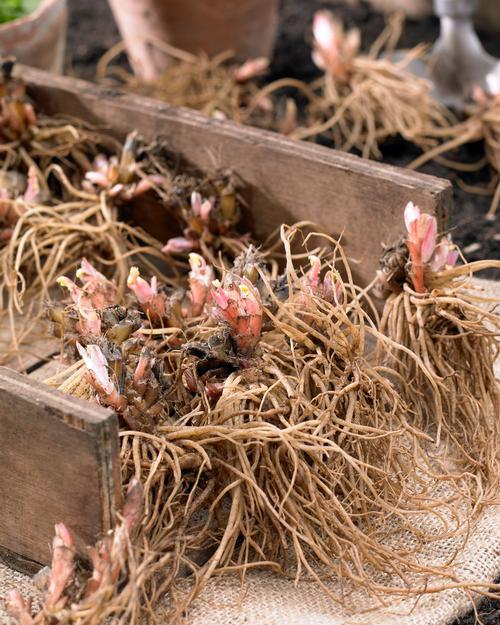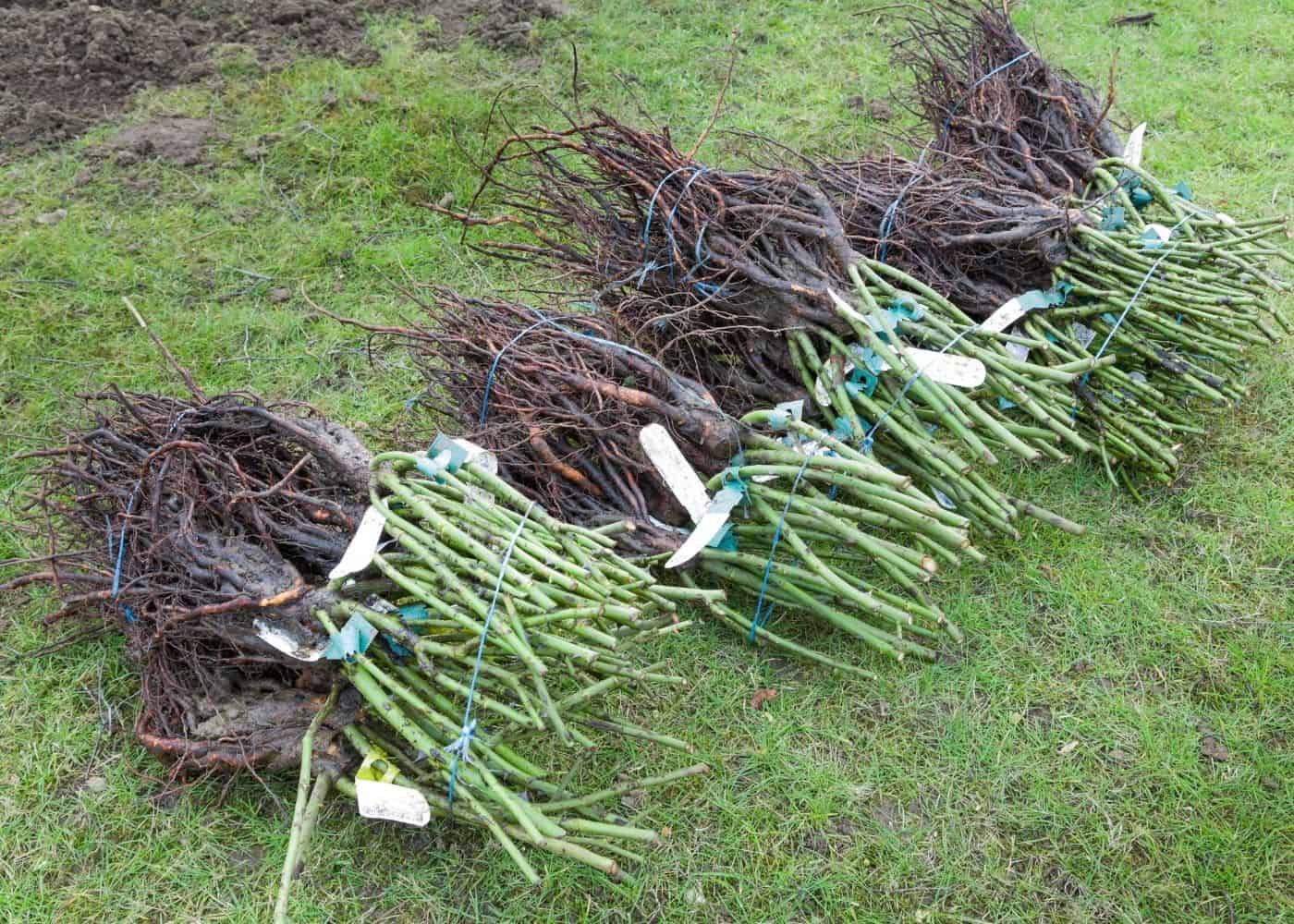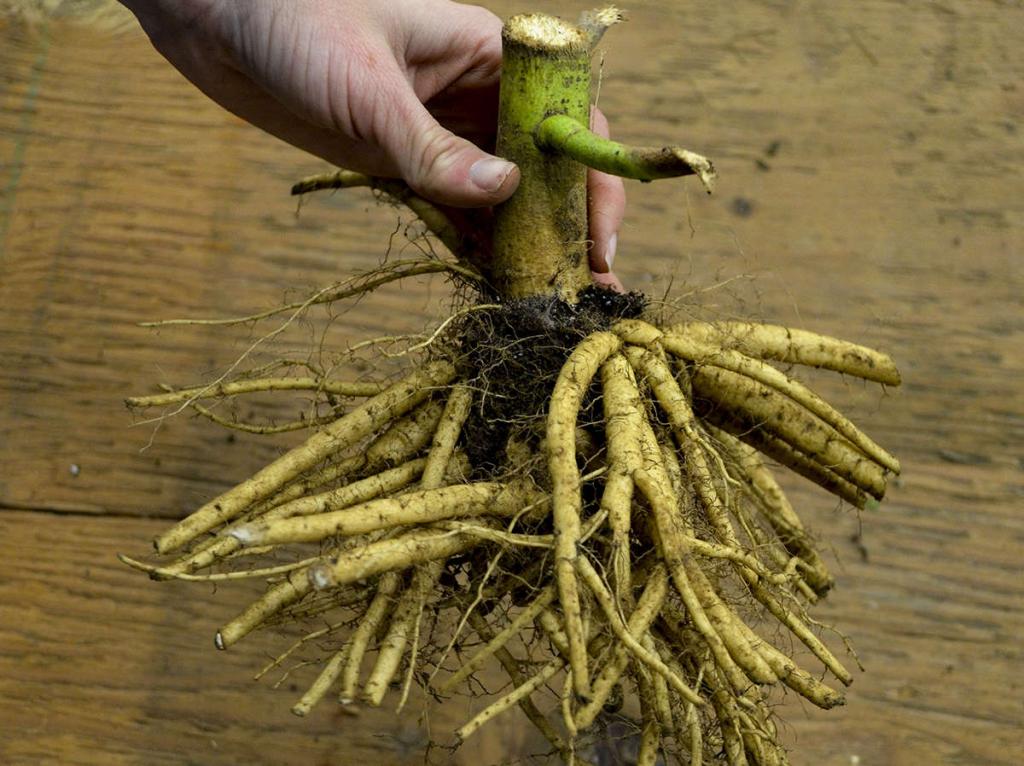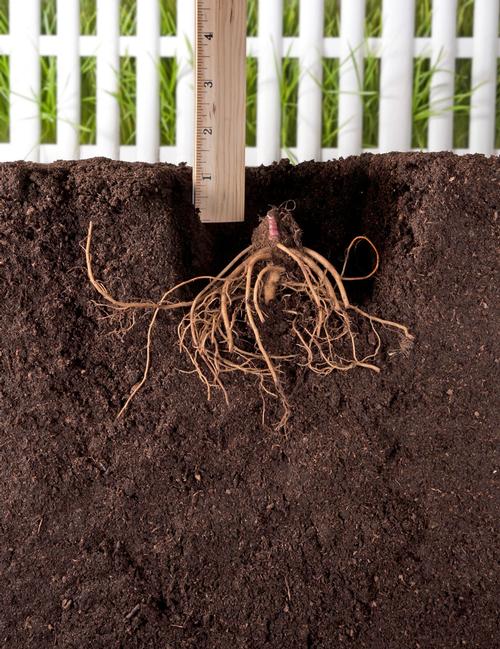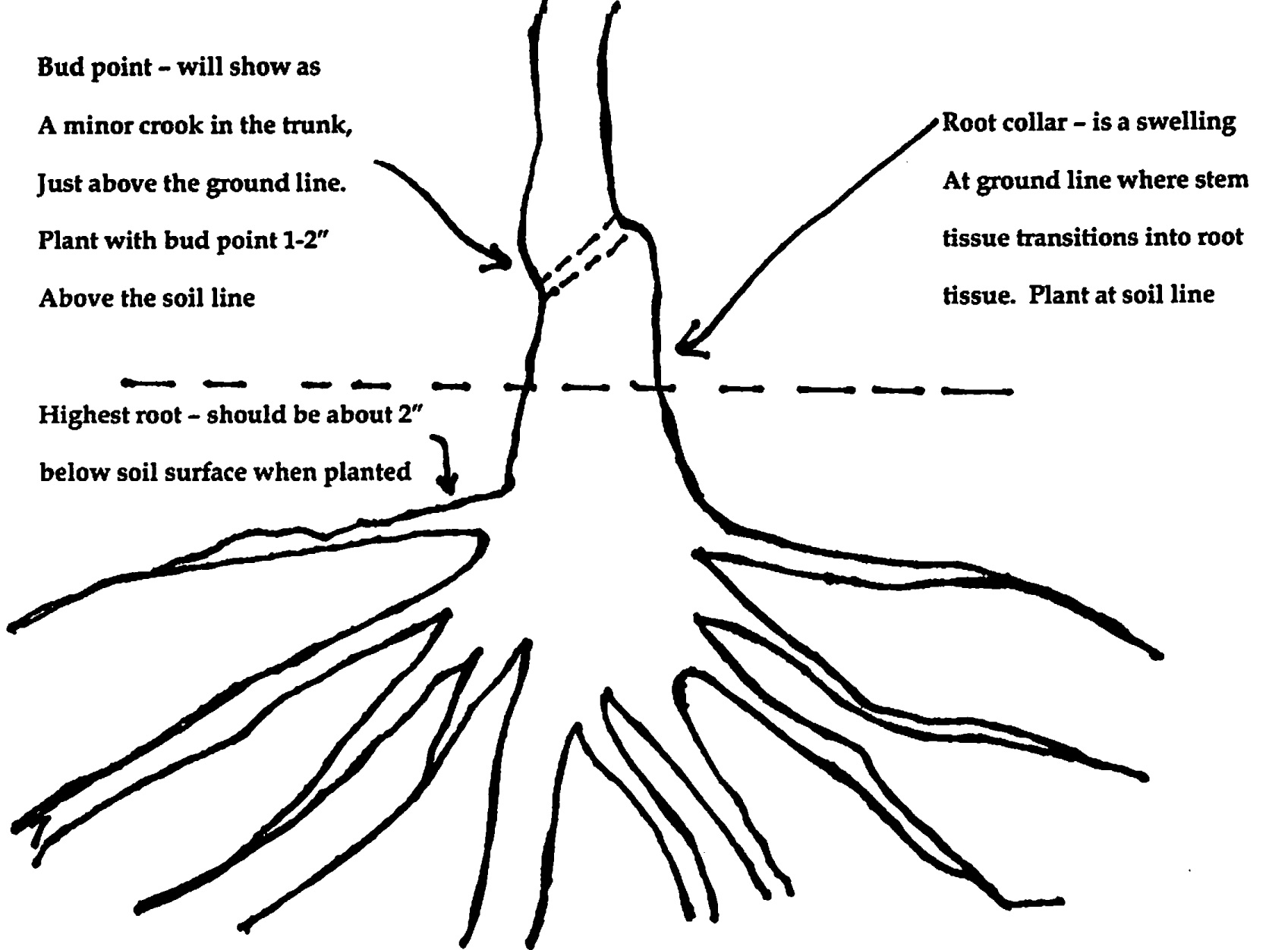What is a Bare Root Plant: Understanding the Basics
Bare root plants are a type of plant that is sold without soil or a pot, with the roots exposed. This unique characteristic allows for a more natural and efficient way of planting, as the roots can establish themselves quickly in the new soil. Bare root plants are typically grown in specialized nurseries, where they are carefully cultivated and harvested to ensure optimal health and quality.
One of the main benefits of bare root plants is their ability to thrive in a wider range of environments. Unlike potted plants, which can be limited by the size and type of pot, bare root plants can be planted directly into the ground, allowing them to grow and develop more freely. This makes them an excellent choice for gardeners who want to create a more natural and diverse landscape.
So, what are bare root plants, exactly? In essence, they are plants that have been carefully grown and prepared for planting, without the need for pots or soil. This approach allows for a more efficient and cost-effective way of planting, as well as a reduced carbon footprint. By choosing bare root plants, gardeners can enjoy a wider range of benefits, from improved plant health to increased biodiversity.
Bare root plants are typically harvested during the dormant season, when the plant is not actively growing. This allows for a more efficient and gentle handling process, which helps to minimize stress and prevent damage to the roots. Once harvested, the plants are carefully packaged and shipped to nurseries and garden centers, where they can be purchased by gardeners.
Overall, bare root plants offer a unique and innovative approach to gardening, one that combines efficiency, sustainability, and natural beauty. By understanding the basics of bare root plants, gardeners can unlock the secrets of this exciting and rapidly growing field, and discover a whole new world of possibilities for their gardens.
How to Choose the Right Bare Root Plant for Your Garden
When it comes to selecting the right bare root plant for your garden, there are several factors to consider. Climate, soil type, and sunlight requirements are all crucial in determining which plants will thrive in your specific environment. By choosing a bare root plant that is well-suited to your garden conditions, you can ensure a healthy and successful planting experience.
First, consider the climate in your area. If you live in a region with harsh winters, you’ll want to choose bare root plants that are tolerant of cold temperatures. On the other hand, if you live in a warm and sunny climate, you can opt for plants that prefer full sun and well-draining soil. Some popular bare root plants for cold climates include perennials like coneflowers and black-eyed susans, while warm climates can support plants like roses and lavender.
Soil type is another important factor to consider when selecting a bare root plant. If your soil is heavy clay or sandy, you’ll want to choose plants that are adapted to those conditions. For example, plants like hostas and coral bells prefer moist, rich soil, while plants like succulents and cacti thrive in well-draining soil. By choosing a bare root plant that is compatible with your soil type, you can reduce the risk of transplant shock and ensure a healthy start.
Sunlight requirements are also critical when selecting a bare root plant. If your garden receives full sun, you can opt for plants that prefer bright light, like sunflowers and zinnias. On the other hand, if your garden is shaded, you can choose plants that prefer partial shade, like ferns and impatiens. By considering the sunlight requirements of your bare root plant, you can ensure that it receives the right amount of light to thrive.
Finally, consider the level of maintenance you’re willing to provide. Some bare root plants, like roses and fruit trees, require regular pruning and fertilization, while others, like succulents and cacti, are low-maintenance and can thrive with minimal care. By choosing a bare root plant that fits your maintenance style, you can enjoy a successful and stress-free planting experience.
By considering these factors, you can choose the right bare root plant for your garden and enjoy a healthy and thriving planting experience. Whether you’re a seasoned gardener or just starting out, bare root plants offer a unique and rewarding way to add beauty and diversity to your garden.
The Advantages of Planting Bare Root: Why You Should Make the Switch
Planting bare root offers a multitude of benefits for gardeners, from cost-effectiveness to improved root development and increased plant diversity. By making the switch to bare root planting, gardeners can experience a more efficient and successful gardening experience.
One of the primary advantages of bare root planting is its cost-effectiveness. Bare root plants are often significantly cheaper than potted plants, making them an attractive option for gardeners on a budget. Additionally, bare root plants require less packaging and shipping materials, reducing waste and minimizing environmental impact.
Bare root planting also promotes improved root development, as the roots are able to establish themselves more quickly in the soil. This leads to healthier and more robust plants, with increased resistance to disease and pests. Furthermore, bare root plants are less prone to transplant shock, as they are not restricted by the confines of a pot.
Another significant advantage of bare root planting is the increased plant diversity it offers. Bare root plants can be sourced from a wide range of suppliers, providing access to a broader selection of plant species and varieties. This allows gardeners to create more diverse and interesting gardens, with a greater range of textures, colors, and fragrances.
Many gardeners have already made the switch to bare root planting, with impressive results. For example, a study by the National Gardening Association found that gardeners who planted bare root trees experienced a 25% higher survival rate than those who planted potted trees. Similarly, a survey by the American Horticultural Society found that 75% of gardeners who planted bare root perennials reported improved plant health and vigor.
So why should you make the switch to bare root planting? With its cost-effectiveness, improved root development, and increased plant diversity, bare root planting offers a multitude of benefits for gardeners. Whether you’re a seasoned gardener or just starting out, bare root planting is definitely worth considering.
By understanding the advantages of bare root planting, gardeners can unlock the secrets of this innovative and effective gardening technique. With its potential to revolutionize gardening practices, bare root planting is an exciting development that is sure to make a lasting impact on the world of horticulture.
A Step-by-Step Guide to Planting Bare Root Plants
Planting bare root plants can seem intimidating, but with the right steps, you can ensure a successful and thriving garden. Here’s a comprehensive guide to help you get started:
Preparation is key when it comes to planting bare root plants. Before you begin, make sure you have the following materials:
- Bare root plants of your choice
- Gardening gloves
- Shovel or trowel
- Watering can or hose
- Soil amendments (optional)
Step 1: Inspect the Roots
Before planting, inspect the roots of your bare root plant to ensure they are healthy and free of damage. Gently remove any packaging or wrapping, and trim any damaged or circling roots.
Step 2: Prepare the Soil
Choose a location with well-draining soil and full sun to partial shade, depending on the plant’s requirements. Dig a hole that is twice as wide and just as deep as the plant’s root system. Add any necessary soil amendments, such as compost or fertilizer, to improve soil quality.
Step 3: Plant the Bare Root Plant
Gently place the bare root plant in the hole, making sure the crown (where the stem meets the roots) is level with the soil surface. Fill the hole with soil, gently firming it around the roots as you go. Water thoroughly to settle the soil.
Step 4: Water and Mulch
Water your bare root plant regularly, especially during the first few weeks after planting. Mulch around the base of the plant to retain moisture and suppress weeds.
Step 5: Provide Ongoing Care
Keep the soil consistently moist, but not waterlogged, during the first growing season. Fertilize regularly, following the manufacturer’s instructions. Prune or train the plant as necessary to maintain its shape and promote healthy growth.
Tips for Handling and Storing Bare Root Plants:
- Handle bare root plants gently to avoid damaging the roots.
- Store bare root plants in a cool, dark place until planting.
- Keep bare root plants moist, but not waterlogged, until planting.
By following these steps and tips, you can ensure a successful and thriving garden with your bare root plants.
Common Mistakes to Avoid When Planting Bare Root
While planting bare root can be a rewarding experience, there are several common mistakes that gardeners make that can lead to poor results. By being aware of these mistakes, you can take steps to avoid them and ensure a successful planting experience.
Improper Handling
One of the most common mistakes gardeners make when planting bare root is improper handling. Bare root plants are sensitive to handling, and rough or careless handling can damage the roots and reduce the plant’s chances of survival. To avoid this mistake, handle bare root plants gently and carefully, making sure to support the roots and avoid bending or twisting them.
Inadequate Soil Preparation
Another common mistake gardeners make is inadequate soil preparation. Bare root plants require well-draining soil that is rich in organic matter. If the soil is not prepared properly, the plant may not receive the nutrients it needs to thrive. To avoid this mistake, test your soil to determine its pH and nutrient levels, and amend it as necessary.
Insufficient Watering
Insufficient watering is another common mistake gardeners make when planting bare root. Bare root plants require consistent moisture, especially during the first few weeks after planting. To avoid this mistake, water your bare root plants regularly, making sure the soil is consistently moist but not waterlogged.
Planting Too Deep
Planting too deep is another common mistake gardeners make when planting bare root. Bare root plants should be planted at the same depth as they were previously growing, with the crown (where the stem meets the roots) level with the soil surface. Planting too deep can cause the plant to become waterlogged and reduce its chances of survival.
Not Providing Enough Support
Finally, not providing enough support is another common mistake gardeners make when planting bare root. Some bare root plants, such as trees and shrubs, may require staking or other support to prevent them from toppling over in the wind. To avoid this mistake, provide support for your bare root plants as necessary, using stakes or other materials to keep them upright and secure.
By being aware of these common mistakes, you can take steps to avoid them and ensure a successful planting experience with your bare root plants.
Bare Root Planting for Beginners: Tips and Tricks
As a beginner gardener, planting bare root can seem intimidating. However, with the right tips and tricks, you can successfully plant and care for your bare root plants. Here are some beginner-friendly tips to get you started:
Select Easy-to-Grow Plants
When selecting bare root plants, choose varieties that are known to be easy to grow and maintain. Some popular options for beginners include perennials like coneflowers, black-eyed susans, and daylilies. These plants are hardy and can thrive in a variety of conditions.
Prepare the Soil
Before planting your bare root plants, make sure to prepare the soil properly. Test the pH level of your soil and amend it if necessary. Add organic matter like compost or manure to improve soil fertility and drainage.
Handle with Care
When handling bare root plants, be gentle and careful. Avoid touching the roots or damaging the plant in any way. If you need to store your bare root plants before planting, keep them in a cool, dark place and make sure they are kept moist.
Plant at the Right Time
Plant your bare root plants at the right time for your climate. In general, spring and fall are the best times to plant bare root, as the weather is cooler and there is ample moisture in the soil.
Water Wisely
Water your bare root plants regularly, but avoid overwatering. Check the soil moisture by inserting your finger into the soil up to the first knuckle. If the soil feels dry, it’s time to water.
Provide Support
Some bare root plants, like trees and shrubs, may require support to prevent them from toppling over in the wind. Use stakes or other materials to provide support and keep your plants upright.
Monitor and Maintain
Keep an eye on your bare root plants and monitor their progress. Make sure to provide regular maintenance, including watering, fertilizing, and pruning, to keep your plants healthy and thriving.
By following these tips and tricks, you can successfully plant and care for your bare root plants. Remember to be patient and enjoy the process of watching your plants grow and thrive.
Popular Bare Root Plants for Your Garden
Bare root plants are a versatile and cost-effective way to add beauty and diversity to your garden. Here are some popular bare root plants that are perfect for various garden types:
Perennials
Perennials are a great choice for bare root planting, as they are hardy and can thrive in a variety of conditions. Some popular perennial bare root plants include:
- Coneflowers (Echinacea)
- Black-eyed Susans (Rudbeckia)
- Daylilies (Hemerocallis)
- Hostas (Hosta)
Shrubs
Shrubs are another popular choice for bare root planting, as they can provide structure and beauty to your garden. Some popular shrub bare root plants include:
- Hydrangeas (Hydrangea)
- Roses (Rosa)
- Lilacs (Syringa)
- Boxwood (Buxus)
Trees
Trees are a great choice for bare root planting, as they can provide shade and beauty to your garden. Some popular tree bare root plants include:
- Apple trees (Malus)
- Cherry trees (Prunus)
- Maple trees (Acer)
- Oak trees (Quercus)
Unique Features and Growth Habits
Each of these bare root plants has its own unique features and growth habits. For example, coneflowers are known for their drought tolerance and ability to attract pollinators, while hydrangeas are prized for their large, showy flowers. Daylilies are known for their hardiness and ability to thrive in a variety of conditions, while apple trees are prized for their delicious fruit.
Maintenance Requirements
While bare root plants are generally low-maintenance, they do require some care to thrive. Make sure to water them regularly, fertilize them annually, and prune them as needed to maintain their shape and promote healthy growth.
By choosing the right bare root plants for your garden, you can add beauty and diversity to your outdoor space. Whether you’re a seasoned gardener or just starting out, bare root plants are a great choice for anyone looking to create a thriving and beautiful garden.
Conclusion: Why Bare Root Plants Are a Game-Changer for Gardeners
Bare root plants are a game-changer for gardeners, offering a cost-effective, efficient, and sustainable way to create a beautiful and thriving garden. By understanding the benefits and advantages of bare root plants, gardeners can unlock the secrets of successful gardening and enjoy a more rewarding and fulfilling experience.
From the cost-effectiveness of bare root plants to their improved root development and increased plant diversity, the advantages of bare root planting are clear. By making the switch to bare root, gardeners can experience a more efficient and successful gardening experience, with healthier and more robust plants that thrive in a variety of conditions.
Whether you’re a seasoned gardener or just starting out, bare root plants are a great choice for anyone looking to create a beautiful and thriving garden. With their unique features, growth habits, and maintenance requirements, bare root plants offer a world of possibilities for gardeners of all levels.
So why not give bare root planting a try? With the right knowledge and techniques, you can unlock the secrets of successful gardening and enjoy a more rewarding and fulfilling experience. Whether you’re looking to create a stunning perennial garden, a lush and vibrant shrub border, or a majestic tree landscape, bare root plants are the perfect choice.
By embracing the benefits and advantages of bare root plants, gardeners can revolutionize their gardening practices and create a more beautiful and sustainable outdoor space. So don’t wait – start exploring the world of bare root plants today and discover the secrets of successful gardening for yourself!


/130793077-copy-56a34a4f5f9b58b7d0d14eaa.jpg)
